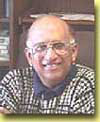|

This article was written in 1991, when the dollar was weak against the British pound, German mark and Japanese yen, and it seemed that most US companies were acquisition targets. It was during this period that Siebe bought Foxboro, Siemens bought the PLC group from Texas Instruments, Modicon was bought by AEG (Schneider came later). The acquisitions that stayed in US hands were Allen-Bradley which was bought by Rockwell, and Fisher Controls and Rosemount by Emerson. My poem, in the lilt of Lewis Carroll's Lobster Quadrille, was also published to accompany this this article, with some interesting cartoons, by CONTROL magazine. Control Magazine, January 1991 |

Buyouts, consolidations, downturns, and take-overs the U.S. industrial control business is witnessing turmoil in large proportions. Ask any instrument vendor how the October ISA show in New Orleans went, and they’ll tell you cheerfully how wonderful it was when, in reality, it was populated more by competitors than customers. In spite of big, expensive trade show booths, few companies are growing or making money. In an industry dominated by engineering thinkers, it is eternally tempting to consider that pure logic and dogged determination eventually will get us out of this economic squeeze. We continue to persistently pursue an evolutionary path with narrow vision, while global revolution is whisking away the prize in a totally different dimension. Perhaps if we look the other way and simply tend to our work on standards, everything will get better. Forgetting the MAP fiascoes of yesteryear, we huddle with excitement over new specifications for the SP-50 Fieldbus. High-tech versus standardizationRaw control technology is changing faster than it can be successfully applied. The controls market, uncomfortable in a changing world impacted by fax machines, cellular telephones and the office PC, seems to want fast-paced technological advancement but chokes when trying to use it through an archaic standardization process. Everyone wants “high-tech,” but no one is willing to pay the price to digest it.Indeed, standardization is a slow, backward movement that attempts to document what is practical today, rather than what is possible tomorrow. The sluggish approach to MAP is an example of what happens in an industry that tries to dictate innovation by committee. What everyone doesn’t wish to think about is that competitive forces are always at work against standards. Standards cause commodities, and commodities are something that production-orientation, practiced by the Japanese, Koreans, and Taiwanese, tends to exploit. But that is the business side of the story, and the engineers think we can rise above it. The American market is stuck on analysis Americans are much more inclined
Americans are much more inclinedto experience "paralysis by analysis" which slows expansion. The fact is that the industrial controls market is driven by capital expenditures for new plant equipment and, in the U.S. , there is a slump. Global competitiveness is driving the demand for increased productivity. Marauding marketeers are pursuing labor and automation where it is most productive and driving for growth in locations where demand is more immediate. After bruising experiences with MAP, robotics and vision systems during the ‘80s, Americans are much more inclined to “paralysis by analysis,” which slows down expansion. Lesser developed countries, with unbruised naivete, are pushing forward much more aggressively, and are stimulating local demand. The weak U.S. dollar is providing a bonanza for Europeans and Japanese seeking business in the United States, and more acquisitions will change the competitive arena. Among the programmable logic controller (PLC) leaders, Modicon, the PLC pioneer, was acquired by German-owned AEG; GE-Fanuc the runner-up is part Japanese; Allen-Bradley, the outright market-share leader was sold to Rockwell, an aerospace conglomerate. Foxboro, is now part of Siebe, a British firm that recently purchased Barber-Colman and Robertshaw. Bailey was bought by an Italian company, and Taylor by Combustion Engineering which in turn was purchased by the combination of ASEA and Brown Boveri, which had already combined with the British company. Only the Japanese have not been acquiring aggressively, although Yokogawa went at least half way with a Johnson Controls joint venture. Who is left? The global market waits for no one Aggressive U.S. companies
Aggressive U.S. companiesare not standing idle while their home markets decline Aggressive American companies are not standing by idly while their home market declines. American marketing instinct is sowing seeds in fertile foreign footholds, realizing that the global village is indeed the marketplace. American businesses are seeking an international sales ratio of 50 to 60 percent, with significant new investment in Europe and other growing areas. Western Europe seems to be surging ahead. Over the last 25 years, Germany had already become a leading exporter of machine-tools and automation equipment, and the recent unification makes Germany the “big apples” in Europe. Opportunities abound for new factories in the newly emerging markets of Easter Europe. Germany is a primary gateway for this business. France, the U.K., Belgium, and the Netherlands are all striving to expand at a similar rate. After its official birth in 1992, the new European Economic Community (EEC) is buying to become the largest and fastest growing market arena in the world during the decade of the ‘90’s. The best American businesses realize this, and are there on the front line, with sales offices throughout Europe and manufacturing plants in strategic locations. The emerging markets in Eastern Europe will surge ahead. But, with little capital and untrained workers, they will look for partnerships, licensed manufacturing, training and service. Their purchases will be for reliable and serviceable equipment not leading and bleeding edge technology. Control products - yesterday and tomorrowIn the early ‘80s, the answer to low-cost offshore labor was thought to be robotics, vision systems and artificial intelligence (AI). Today, AI is emerging slowly; vision systems are still too expensive; and robots are intrinsically more applicable in Japan. In the Fare East, human labor is much more repetitive and can be replaced by machines.Today, control products are either PLCs or distributed control systems (DCS)-both of which are seriously threatened by the arrival of the industrial computer, a version of the ubiquitous, low-cost PC.
The adage “If it ain’t broke, don’t fix it” is slowing the progress of change, although it can never stop it. Technologies like lasers and fiberoptic data transmission still have not expanded to a break-through level. People compare prices and performance with conventional techniques, and the new technologies never scale up. Of course, there is some justice in that and the market should indeed vote on the validity, or otherwise, of a particular technology. Productivity is the prizeThe huge growth of personal computers in the office environment was caused by the fact that real office productivity was poor-revolutionized by word-processing, database, and spreadsheets. By contrast, productivity in the factory has never been too bad, and factory computers have long been under-used.In the U.S., the drive for increased productivity comes from a need to respond to offshore competition. But, how can you compete with a labor force whose only alternative is work in a rice field? How can you compete a Corvette in a two-car garage match his counterpart in Taiwan or Singapore, living with his parents in cramped quarters and hungry for upward mobility, when they both get the same INTEL data sheet within a week of introduction of a new chip? Broadly speaking, productivity is measured by five things:
2. Raw material use and waste; 3. Energy consumption; 4. Capital expenditure; and 5. Quality. The global race is on.....
"There's a Siemens right behind you, and he's treading on your tail See how eagerly the Germans and the Japanese advance! Their marks and yen are buying more bucks - so will you join the dance?
"You can really have no notion how delightful it will be
"What matters it how far you go?" the Modicon replied

|
Return to Index of all JimPinto Writings

 Return to JimPinto.com HomePage
Return to JimPinto.com HomePage
If you have ideas or suggestions to improve this site, contact: webmaster@jimpinto.com
Copyright 2000 : Jim Pinto, San Diego, CA, USA
 People compare prices and performance
People compare prices and performance